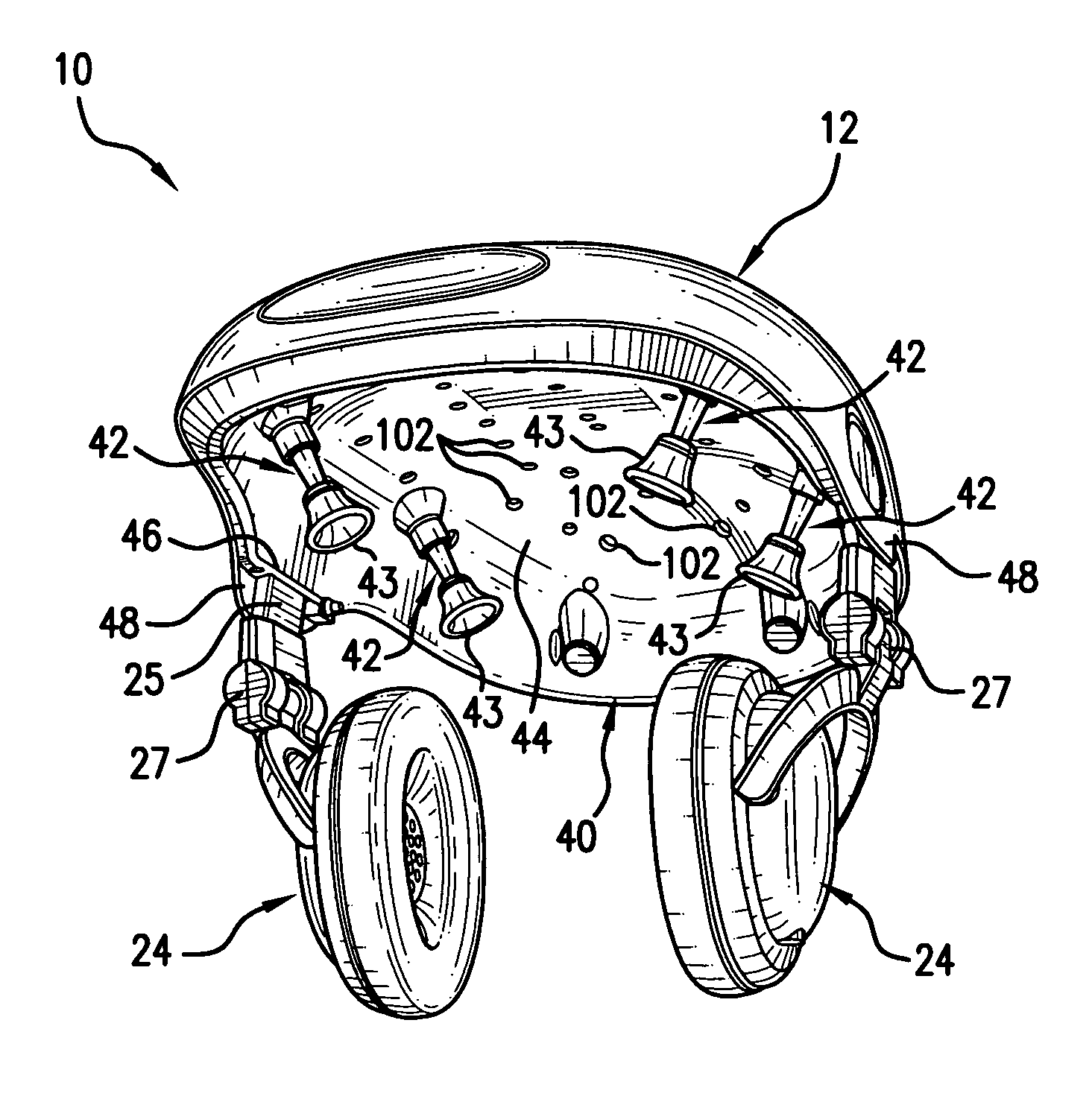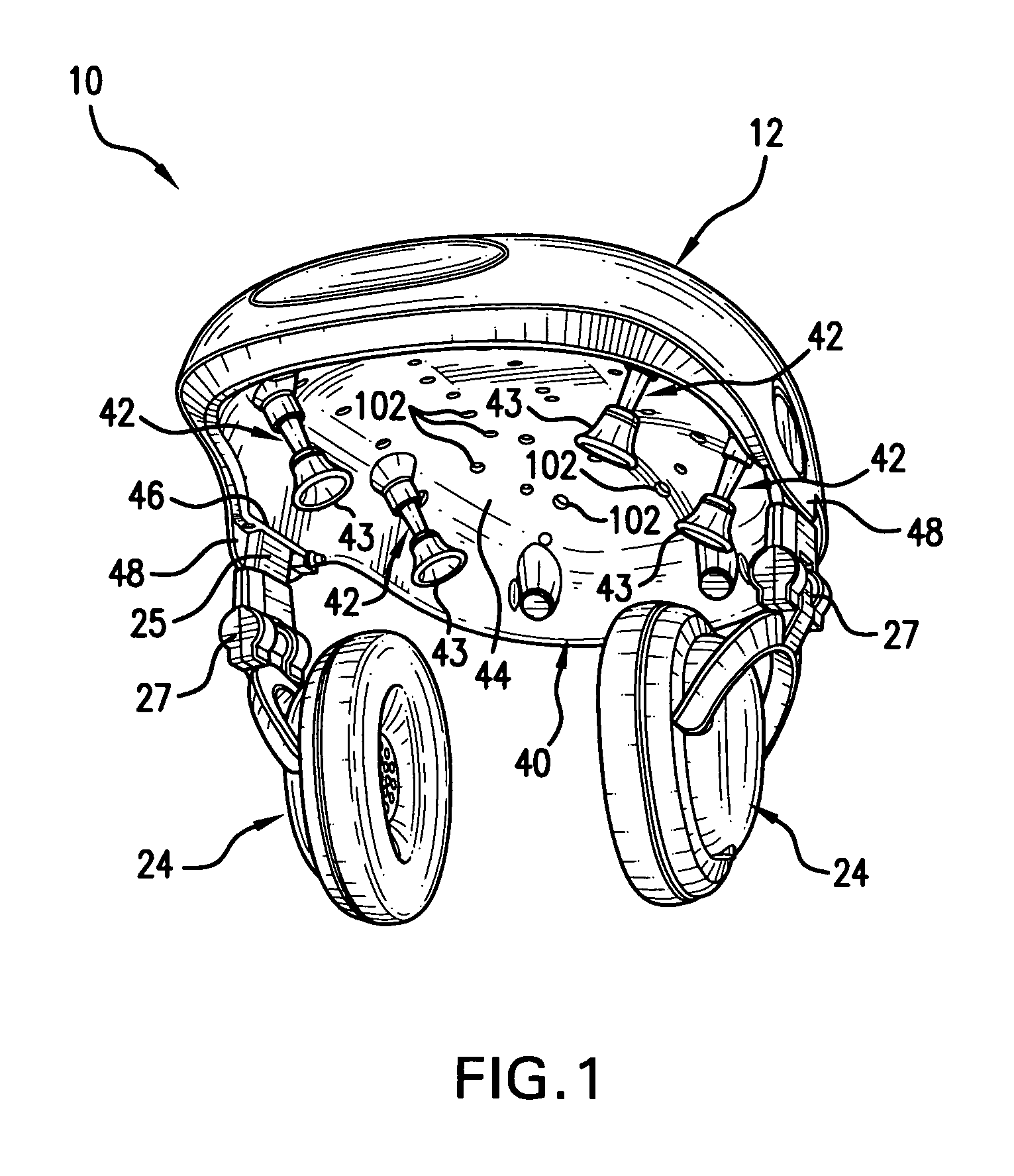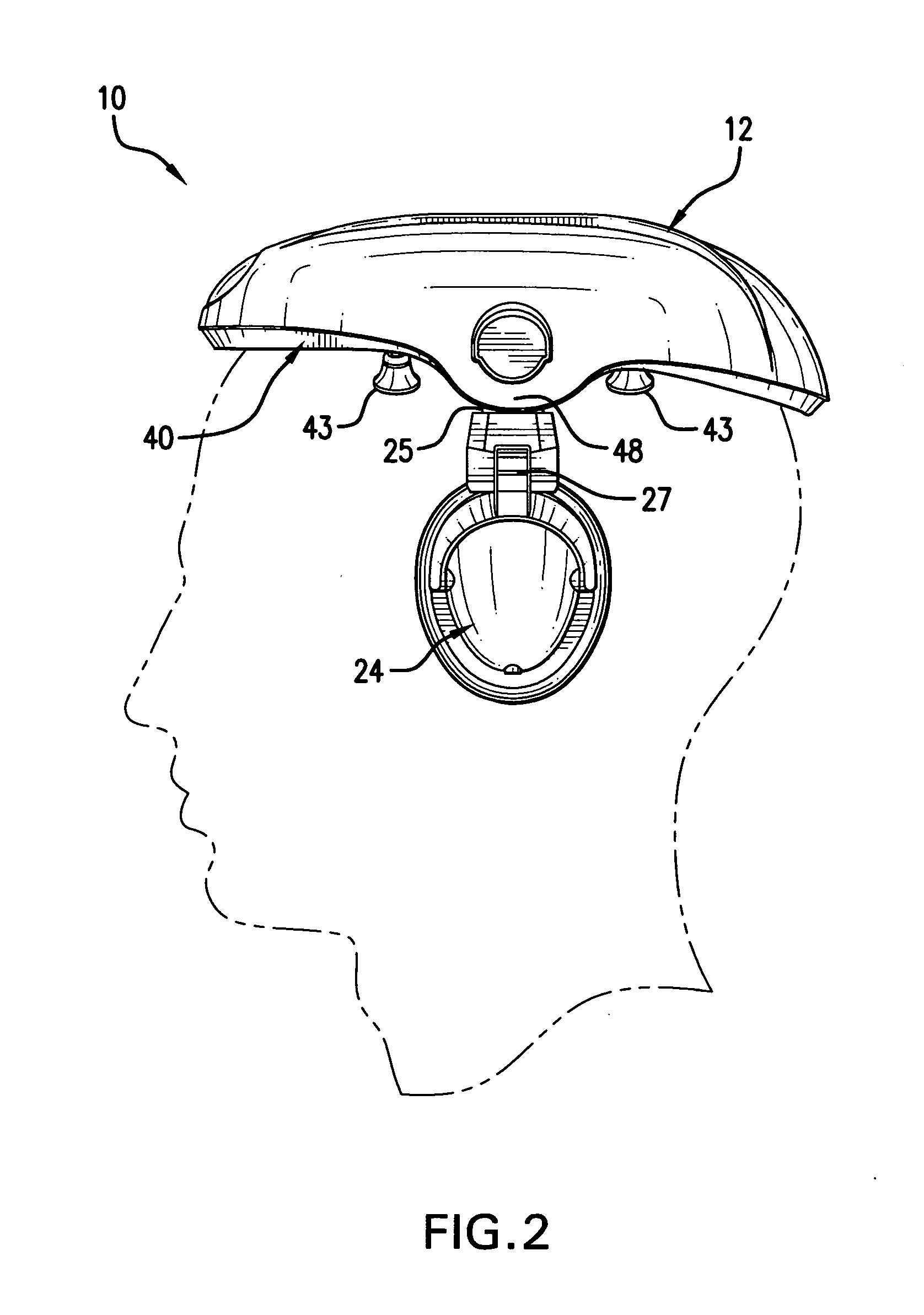Phototherapy apparatus for hair, scalp and skin treatment
- Summary
- Abstract
- Description
- Claims
- Application Information
AI Technical Summary
Benefits of technology
Problems solved by technology
Method used
Image
Examples
Embodiment Construction
[0045]Referring to the several views of the drawings, the wearable hands-free apparatus that provides phototherapy treatment to the scalp, skin tissue, and layers of a user's dermis is shown according to several embodiments of the invention and is generally indicated as 10. The phototherapy apparatus 10 is specifically sized, structured and configured to be worn on a person's head.
[0046]In each of the embodiments of the invention, the phototherapy apparatus 10 includes a head unit 12 (e.g., a headset, head phones, headband, or helmet) with left and right audio earphones 24 to allow the user to listen to an audio program during a phototherapy treatment. The head unit 12 supports a light emitting canopy band or plate 40 that houses an array of light generating sources 102 (see FIGS. 3-4 and 15), such as light emitting diodes (LEDs), lasers, infrared lights, or other suitable light sources that are adapted to emit light within a particular wavelength range correlating with the treatmen...
PUM
 Login to View More
Login to View More Abstract
Description
Claims
Application Information
 Login to View More
Login to View More - R&D
- Intellectual Property
- Life Sciences
- Materials
- Tech Scout
- Unparalleled Data Quality
- Higher Quality Content
- 60% Fewer Hallucinations
Browse by: Latest US Patents, China's latest patents, Technical Efficacy Thesaurus, Application Domain, Technology Topic, Popular Technical Reports.
© 2025 PatSnap. All rights reserved.Legal|Privacy policy|Modern Slavery Act Transparency Statement|Sitemap|About US| Contact US: help@patsnap.com



